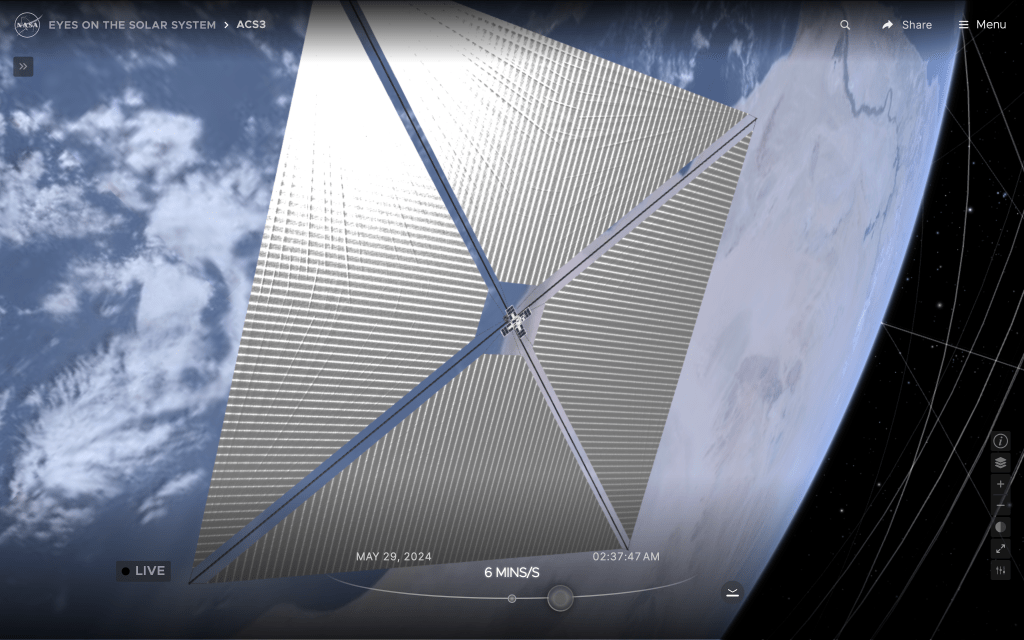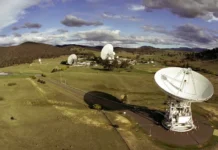In a significant leap for space exploration and technology, the Advanced Composite Solar Sail System, which was launched in April 2024, has successfully deployed its reflective sail as of August. This innovative spacecraft is currently orbiting the Earth at an altitude of around 600 miles (approximately 1,000 kilometers) and has become a fascinating spectacle in the night sky, particularly for observers residing in the Northern Hemisphere.
Solar sails are an intriguing concept in space propulsion technology. Unlike traditional spacecraft that rely on chemical fuels, solar sails harness the momentum of photons from the Sun to propel themselves forward. This method of propulsion is not only efficient but also sustainable, as it requires no fuel and can potentially allow spacecraft to travel long distances in space without the constraints of carrying heavy fuel loads.
The Advanced Composite Solar Sail System, part of ongoing efforts to test and refine solar sail technologies, is a testament to the possibilities of harnessing solar energy for space travel. The sail, made from advanced composite materials, is designed to be lightweight yet durable, capable of withstanding the harsh conditions of space. This particular solar sail measures several meters across when fully deployed, creating a large reflective surface that catches sunlight.
One of the most exciting aspects of this mission is that the solar sail can be seen from Earth with the naked eye. For those interested in catching a glimpse of this technological marvel, the NASA mobile app now features a new tool that guides users on how to spot the solar sail in the night sky. This app provides real-time updates on the sail’s visibility, though it’s important to note that sightings can be intermittent, and the sail may appear with varying levels of brightness as it orbits the Earth.
The sail’s visibility is contingent on a few factors, including the time of night and the position of both the sail and the observer. Given its reflective nature, the solar sail is best seen when it catches sunlight, which usually happens shortly after sunset or before sunrise. Sky watchers in the Northern Hemisphere have the best chances of spotting this dazzling piece of technology, adding a new dimension to stargazing experiences.
Beyond the immediate excitement of spotting the solar sail, this mission holds broader implications for the future of space travel. Solar sails could play a crucial role in future missions, especially those aimed at deep space exploration. As humanity sets its sights on destinations like Mars and beyond, the need for efficient, sustainable propulsion systems becomes ever more pressing. Solar sails offer a promising solution due to their ability to provide continuous thrust without the need for refueling.
The development and deployment of the Advanced Composite Solar Sail System also reflect the collaborative efforts of scientists and engineers who are pushing the boundaries of current technology. Their work not only advances our understanding of solar propulsion but also inspires future innovations in spacecraft design. The success of this mission could pave the way for larger and more ambitious projects, potentially leading to solar sail missions that explore the far reaches of our solar system and perhaps even beyond.
To put the significance of this mission into perspective, it’s helpful to consider the history of solar sails and their journey from concept to reality. The idea of using sunlight for propulsion was first proposed in the 17th century by astronomer Johannes Kepler. However, it remained largely theoretical until the late 20th century, when advancements in materials science made the construction of functional solar sails feasible.
The first successful demonstration of solar sail technology in space was achieved by the Japanese IKAROS mission in 2010, which proved that solar sails could be used for interplanetary travel. Since then, several missions have tested various aspects of solar sail technology, each contributing valuable insights to the field. The Advanced Composite Solar Sail System builds on these past successes, incorporating state-of-the-art materials and design principles to optimize performance.
For those following the progress of this mission, the NASA app is an invaluable resource. It not only helps locate the solar sail in the sky but also provides educational content about the mission and the technology behind it. This makes it an excellent tool for educators and students interested in learning more about space exploration and the innovative technologies that drive it.
In conclusion, the deployment of the Advanced Composite Solar Sail System marks an exciting milestone in the field of space exploration. Its successful operation and visibility from Earth offer a unique opportunity for the public to engage with cutting-edge space technology. As we look toward the future, solar sails may become a common sight in the night sky, symbolizing humanity’s ongoing journey into the cosmos and our commitment to sustainable exploration practices. This mission not only enhances our scientific knowledge but also ignites the imagination of those who gaze upon it, reminding us of the endless possibilities that lie beyond our planet.
For more detailed information about spotting the solar sail and understanding the technology behind it, you can visit NASA’s official website and explore their resources.
For more Information, Refer to this article.


































